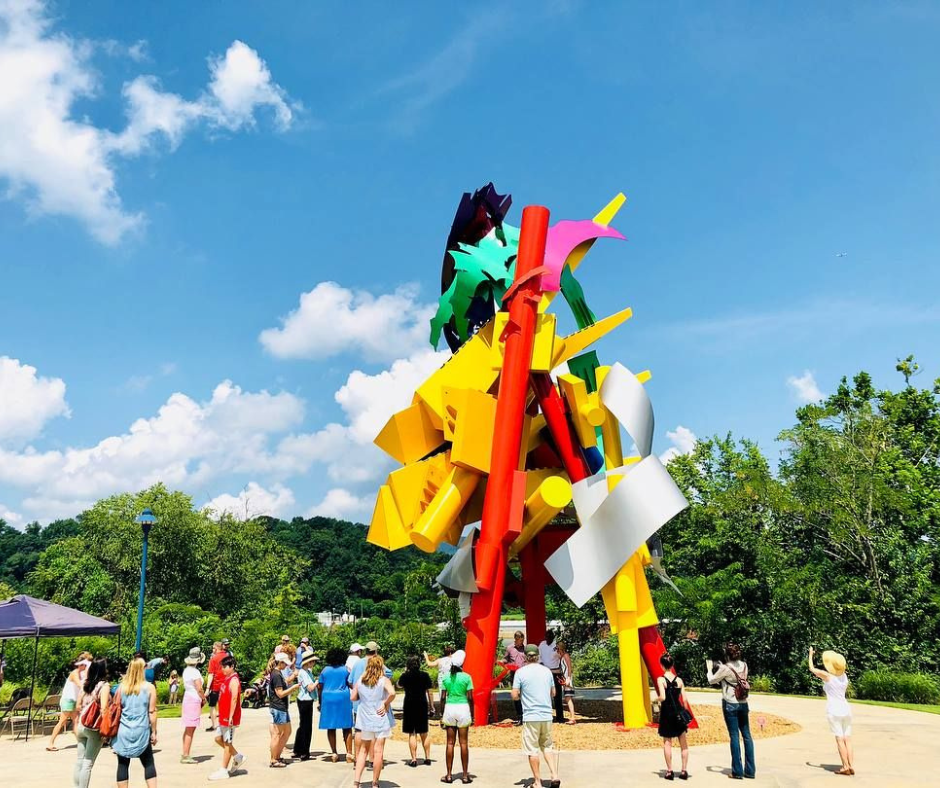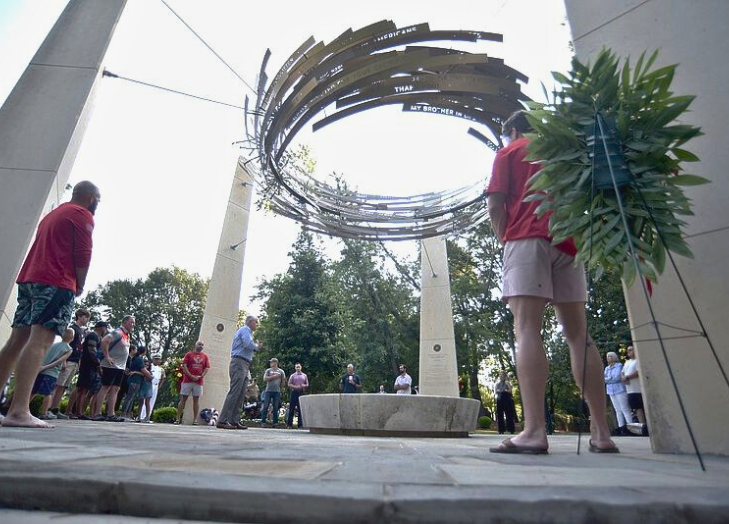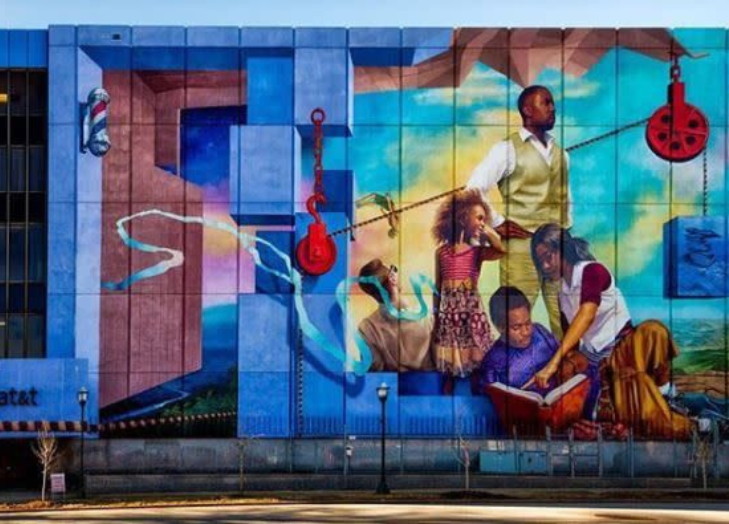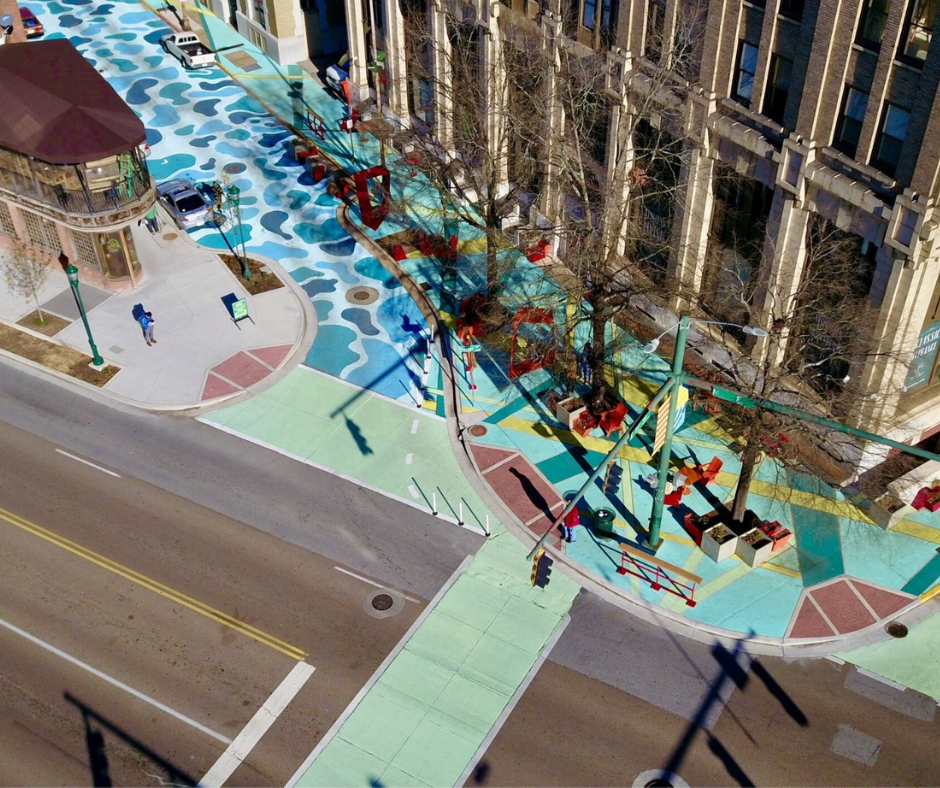DISCOVER YOUR LOCAL BICYCLING COMMUNITY
Find local advocacy groups, bike shops, instructors, clubs, classes and more!
The Power of Public Art: Creative Placemaking in Chattanooga, Tennessee
When a community applies for a Bicycle Friendly Community award, one relatively new question we ask on the application is about local efforts to “incorporate public art or murals along your community’s bicycle network.”
Why do we ask this? For one, it’s worth reflecting on the level of investment a community is putting into creating creative, interesting, and welcoming public spaces. Planners call this placemaking, a philosophy and practice that “inspires people to collectively reimagine and reinvent public spaces as the heart of every community.” In other words, investments in local public art make active transportation better by making the places we walk and bike more interesting and enjoyable. Public art like murals and sculptures can also celebrate local culture, acknowledge historical events, and commemorate people who came before us.
Chattanooga, a Silver-level Bicycle Friendly Community in southeastern Tennessee, shared how they use art, history, and placemaking initiatives to celebrate their city’s heritage while enhancing the quality of life for its residents. Read on to discover more!
From the Riverwalk to Patten Porch: Infusing Creativity, History, and Culture
One of the key initiatives driving Chattanooga’s transformation into a better place for people to work, live, and bike is its commitment to public art. Perhaps the most iconic example of this effort is the Tennessee Riverwalk — described as “a vital recreational and transportation link in our community [that] weaves together a number of cultural experiences through interpretive signage and placement of the greenway.” The Tennessee Riverwalk, stretching 13 miles from Chickamauga Dam to the St. Elmo neighborhood, serves as a canvas for a myriad of artistic expressions and historical reflections. Signage and memorials along the greenway pay homage to pivotal moments in the city’s history, from the Trail of Tears to more recent tragedies like the Fallen Five Memorial.
Beyond the Riverwalk, colorful murals adorn the streets — particularly along E. Martin Luther King Boulevard, paying homage to the city’s African American community. In 2020, a “Black Lives Matter” mural was painted on the roadway in front of the Bessie Smith Cultural Center and African American Museum. But these initiatives aren’t just decorative – the creative installations act in concert with a road diet that added bicycle facilities. That’s the key here: ensuring that placemaking initiatives are part of a larger strategy to make a community safer, easier, and more enjoyable for everyone to move through.
Another way to make local streets more welcoming is to invest in projects that engage residents with nature and community. One notable placemaking project in Chattanooga that aims to create a welcoming space is Patten Porch, which was transformed in 2020 after community feedback called for “a true neighborhood meeting ground with space to rest, relax, and socialize.” After the project was completed, they saw “an increase in diversity of users and increased enjoyment of the space….The swings and mural have become hot spots for selfies and social media posts, bringing new faces to the area. There is an increased perception of safety for pedestrians and cyclists and overall comfort level.”




Looking Ahead: Placemaking for Sustainable Communities
By embracing public art, honoring history, and prioritizing placemaking, Chattanooga has not only made biking more enjoyable but has also transformed its urban landscape into a living, breathing work of art. This effort to get more people to choose active transportation is just one part of a larger Climate Action Plan, which sets a goal of achieving a city-wide net zero carbon footprint by 2050. Naturally, public art isn’t the only approach: “The plan identifies specific actions related to multimodal transportation to accomplish that goal, including expanding pedestrian and bicycle infrastructure, especially in high mode-shift potential areas and low-income and underserved neighborhoods.”
In the journey towards sustainable and equitable urban development, Chattanooga reminds us that the path to a more Bicycle Friendly America is paved with creativity, inclusivity, and a deep appreciation for the places we call home. We hope other places across the country can learn from places like Chattanooga and other Bicycle Friendly Communities as we all work towards making biking better.